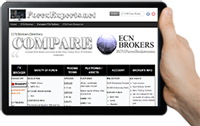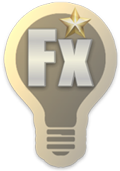The Correlation Between US Bonds Yields and USDCHF
U.S. bond yields have historically shown a strong correlation with the USD/CHF currency pair.
Since 1990—and especially after 2007—global financial markets have increasingly functioned as a unified investment environment. This interconnected system allows capital to flow freely in pursuit of the most favorable risk/return balance. When a significant shift in the risk/return profile occurs in one market, other markets tend to respond quickly in an effort to restore equilibrium.
🏛️ U.S. Bond Yields: A Brief Historical Perspective
U.S. Treasury yields have mirrored major economic cycles—rising and falling in response to inflation, financial crises, and monetary policy shifts. Today’s yields, with the 10-year at 4.35% and the 30-year at 4.87%, are near their highest levels in over a decade, yet still fall short of long-term historical norms. The continued inversion of the yield curve reflects investor anxiety over potential recession risks, despite the Federal Reserve’s cautious stance.
Historical Milestones
-
1970s–1980s Inflation Era: Bond yields soared above 15% amid oil shocks and runaway inflation.
-
Post-1982: A long-term downtrend began as inflation was tamed and policy stabilized.
-
2008 Financial Crisis: Economic collapse drove yields to historic lows—10-year notes fell to around 2.32% between 2011 and 2012.
-
2022–2023 Inflation Resurgence: Rapid Fed rate hikes in response to rising prices pushed the 10-year yield up to 4.81%, marking a post-crisis peak as of 2025.
📈 The Relationship Between U.S. Bonds and USD/CHF
The underlying mechanisms of the bond and Forex markets are closely related, as both are strongly influenced by interest rate levels. Any changes in actual interest rates or expectations surrounding them lead to a reevaluation of risk and return across both asset classes.
U.S. bond yields have shown a historical correlation with USD/CHF. This is largely because the Swiss Franc—like the Japanese Yen—traditionally offers very low interest rates. When U.S. interest rates rise, investors are incentivized to go long on USD/CHF to capitalize on carry trade opportunities. In simple terms, they buy the U.S. Dollar and sell the Swiss Franc in order to benefit from the positive overnight interest rate differential.
Chart: 10-Year Treasury Yield vs. USD/CHF (ForexExperts.net via Google Finance)

📈 The Inverse Relationship Between Bond Yields and Bond Prices
Although USD/CHF shows a direct correlation with U.S. bond yields, it exhibits an inverse correlation with U.S. bond prices. Here's why:
-
Bond price refers to the amount a bondholder pays to purchase a bond. When interest rates rise, the price of existing bonds falls.
-
Bond yield represents the return paid to the bondholder. When interest rates rise, bond yields increase accordingly.
Therefore, bond prices and bond yields are inversely correlated—when bond prices fall, bond yields rise, and vice versa.
■ USD/CHF is directly correlated with U.S. bond yields
■ USD/CHF is inversely correlated with U.S. bond prices
📈 U.S. Bonds and USD/JPY
Similar to USD/CHF, the USD/JPY pair is also strongly influenced by U.S. Treasury bond yields. Since the Japanese Yen traditionally carries very low interest rates, it is often used for implementing carry-trade strategies based on changes in global interest rate conditions.
During periods when U.S. interest rates begin to rise, Forex investors tend to go long on USD/JPY to profit from the widening interest rate differential.
■ USD/JPY is directly correlated with U.S. bond yields
■ USD/JPY is inversely correlated with U.S. bond prices
■ The Correlation of US Bonds Rates to USDCHF
ForexExperts.net
🔗 READ MORE
» Introduction to Trading Strategies
♞ DAY-TRADE STRATEGIES
» Falsebreak Candle
» Bollinger-RSI
» Stochastic Day-Trade
» Breakout Strategy
♚ SWING-TRADE STRATEGIES
» Riding the Trend
» Moving Envelopes
» MACD Swing
♜ SCALPING STRATEGIES
» Stochastic Scalper
» Bollinger-RSI Scalping
» Hit-Run Trading
♟ STRATEGIES FOR BEGINNERS
» News-Trading
» Follow-The-Trend
» Support and Resistance
» Fibonacci Retracements
» Stochastics Trading
» Chart Patterns
💱 MARKET CORRELATIONS
» US Yields and USDCHF
» Crude Oil and Forex
» USDJPY and US Stock Indices
» AUD and Gold Price Correlation








